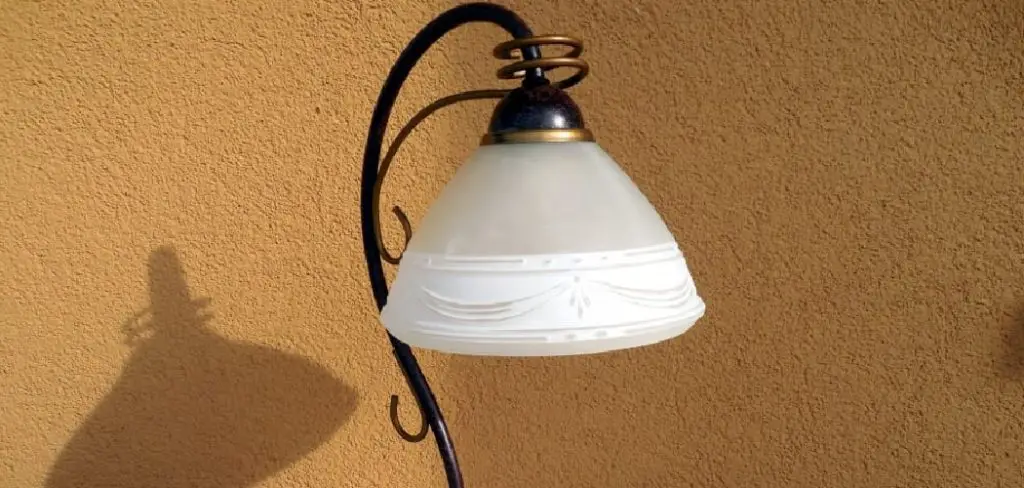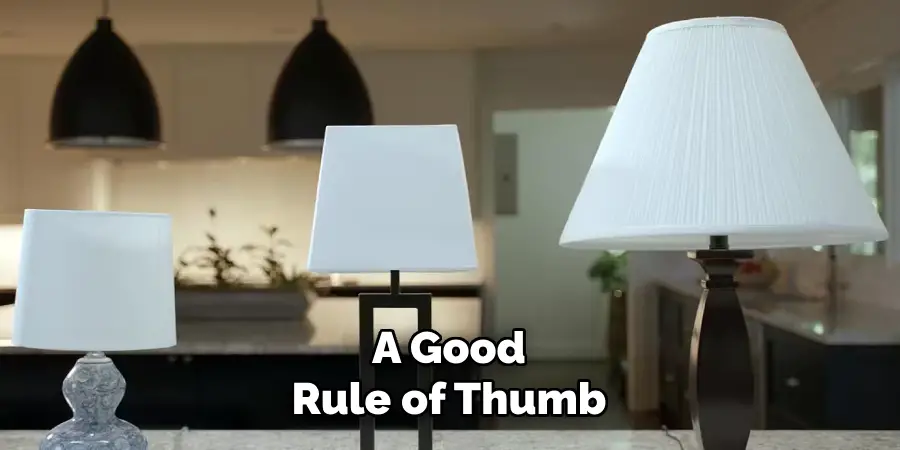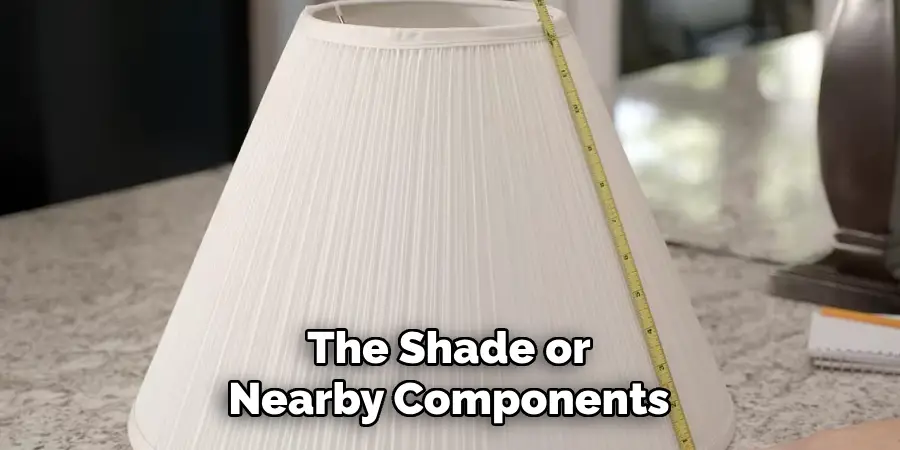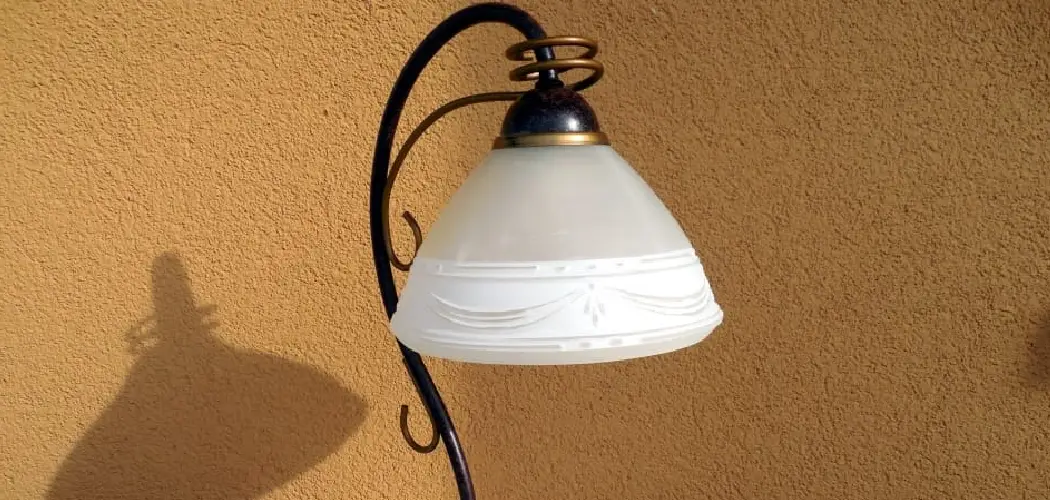Choosing the right lampshade is essential to achieving both aesthetic appeal and functional lighting in your space. A well-proportioned lampshade not only complements the overall design of your lamp but also ensures appropriate light diffusion to suit your needs. The size of the lampshade plays a critical role in maintaining the balance and visual harmony of the lamp.

A shade that is too large may overpower the lamp base, while one that is too small can look undersized and awkward. Understanding how to size a lampshade for a lamp is crucial in creating a cohesive and stylish look. This guide is designed to take you step by step through selecting the perfect lampshade size to match any lamp base and decor style. By following these guidelines, you will enhance your lighting fixtures’ functionality and appeal.
Understanding Lampshade Proportions
General Rules of Thumb
Keeping proper proportions in mind when sizing a lampshade is key to achieving a harmonious and balanced look. A useful guideline is that the height of the shade should measure approximately 60–70% of the height of the lamp base. For example, if the lamp base is 20 inches tall, the shade height should ideally be between 12 and 14 inches. Additionally, the width of the shade is another critical factor. A good rule of thumb is that the shade’s width should be about twice the width of the lamp base at its widest point. This ensures that the shade complements the base rather than overwhelming or underwhelming it.

Balance and Visual Weight
Proportion is essential not only for visual harmony but also for balancing the overall feel and functionality of the lamp. A well-proportioned shade makes the lamp appear cohesive and elegant, seamlessly integrating into your space. Additionally, the size of the shade influences the lamp’s style and how light is distributed in the room. A larger shade often provides a more diffused, softer light, whereas a smaller shade may create a focused and direct light source. By understanding these principles, you can choose a lampshade that enhances both the aesthetic and practical aspects of your lighting.
How to Size a Lampshade for a Lamp: Measuring the Lamp Base
Properly measuring the lamp base is essential to selecting a lampshade that complements the lamp’s proportions and ensures visual harmony. Here are the key measurements to consider:
Height of the Lamp Base
To determine the height of the lamp base, measure from the very bottom of the base up to where the bulb socket begins. This measurement helps guide the general size of the lampshade, ensuring it is neither too large nor too small in relation to the lamp base.
Widest Point of the Base
Next, measure across the lamp base at its widest point. This dimension is crucial in maintaining balance between the base and the shade, as a shade that is too narrow might look disproportionate, while one that is overly wide could overpower the lamp.
Socket-to-Harp Height
The socket-to-harp height is measured from the bulb socket to the very top of the harp – the U-shaped frame that supports the shade. This measurement helps ensure the shade is placed correctly and sits at the right height, providing both beauty and functionality to the overall lamp design. By accurately capturing these dimensions, you can choose a shade that fits seamlessly with your lamp base, completing its look.
Choosing the Shape of the Lampshade
Selecting the right shape for your lampshade is essential to achieving a balanced and cohesive look for your lamp. The shape not only complements the lamp’s design but also influences how light is distributed throughout the room and impacts the overall aesthetic of the space.

Common Lampshade Shapes
Lampshades come in a variety of shapes, with some of the most popular options being empire, drum, bell, rectangular, square, and oval. Each shape has its distinct style and charm, allowing you to pick one that aligns best with your lamp’s design and the surrounding décor.
Matching Shape with Base Style
When choosing a lampshade shape, it’s essential to consider the style of the lamp base. Tall and slender bases are better suited for taller shades, such as the Empire or drum styles, complementing their vertical proportions. Conversely, round bases tend to pair harmoniously with round shades to create a unified and elegant look.
How Shape Affects Size Perception
Shape also plays a role in how the lampshade’s size is perceived. For example, a wide drum shade might appear larger than an empire shade of the same diameter. This illusion can influence the overall visual weight of the lamp, so it’s important to choose a shape that maintains a balanced silhouette.
Selecting the Correct Fitting Type
Choosing the right fitting type for your lampshade is a critical detail, ensuring functionality and proper aesthetics. There are three main types of shade fittings to consider: Spider, Uno, and Clip-on. The Spider fitting is the most common and typically pairs with lamps that use a harp and finial system. It is versatile and widely used for table and floor lamps. Uno fittings, however, are designed for down-bridge lamps and connect directly to the lamp socket, making them ideal for adjustable or reading lamps. Lastly, Clip-on fittings are straightforward and best suited for small fixtures, including chandeliers and wall sconces, as they fasten directly onto the bulb.
The type of fitting matters because it determines how the lampshade connects to the lamp base and directly influences the final shade height, which impacts the overall balance and proportion of the lamp. Ensuring the chosen fitter works seamlessly with your lamp is essential. For example, Spider fitters should always pair with lamps equipped with a harp, while Uno fitters are specifically designed to match down-bridge lamp setups. Selecting the correct fitting type ensures a secure fit, proper alignment, and a polished appearance for your lighting fixture.
Considering Bulb Clearance and Light Output
Bulb-to-Shade Clearance
Maintaining proper bulb-to-shade clearance is essential for both safety and performance. A gap of at least 2–3 inches between the bulb and the inside of the lamp shade helps prevent overheating, reducing the risk of damage to the shade or nearby components. This clearance also contributes to better air circulation, prolonging the lifespan of your bulb and ensuring a well-functioning lighting fixture.

How Shade Size Affects Light
The size of your chosen shade is critical in determining light output. Smaller lamp shades tend to concentrate and restrict light, creating a more focused and contained illumination that suits tasks like reading. Conversely, larger shades allow light to diffuse more broadly across the room, making them ideal for ambient lighting. Choosing the right size helps set the preferred mood and functionality of the space.
Shade Material Impact
Material selection for a lampshade significantly influences the overall lighting effect. Light or translucent materials, such as linen or parchment, enhance brightness and create an open, welcoming atmosphere. On the other hand, darker or opaque materials, like silk or metal-lined interiors, tend to limit light output, crafting a more intimate and moody environment. Carefully considering shade material ensures the lighting meets your specific needs.
Trying It Out and Making Adjustments
When choosing the perfect lamp shade, experimenting and adjusting are essential steps to achieving the desired look and functionality.
Test Different Sizes
One effective way to test different shade sizes is by using paper mockups at home or trying on various options in-store. This hands-on approach allows you to visualize how different proportions interact with your lamp base and your space, helping you identify the perfect fit.
When to Adjust Harp Height
If your chosen shade looks out of proportion—either sitting too high or too low—it may indicate the need to adjust the harp height. Harps come in varying sizes, and swapping to the appropriate one can help position the shade correctly for a polished and cohesive appearance.
Making Sure the Lamp Looks Good from All Angles
Lastly, ensure the lamp maintains its balance and style by viewing it from multiple angles. Consider how the lamp appears from various points in the room to guarantee that the shade complements the base and the overall design. Checking for harmony and proportion from every perspective ensures your lamp is both functional and a beautiful decorative element.

Conclusion
Proper lampshade sizing is key to achieving a balanced and stylish look for any lamp. It requires careful measuring, correct proportioning, and selecting a shape and fitter that align with the lamp’s base. When learning how to size a lampshade for a lamp, trust your eye while keeping fundamental guidelines in mind to maintain harmony in your design. By putting in thoughtful effort, you can transform your lamp into both a functional and stunning decorative element. Remember, the right lampshade size enhances your lamp and the room’s overall ambiance.

